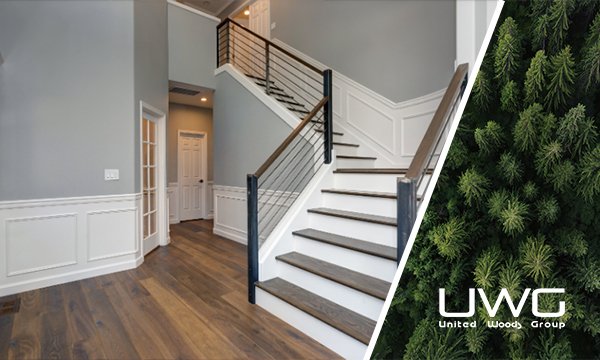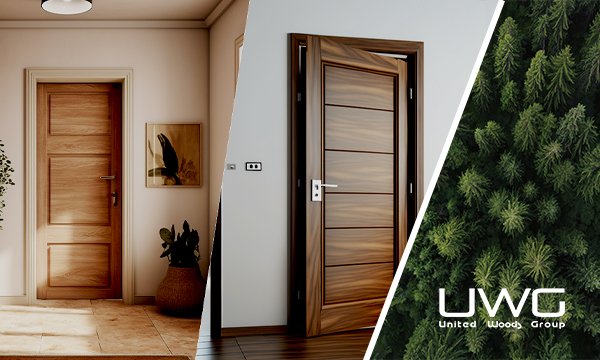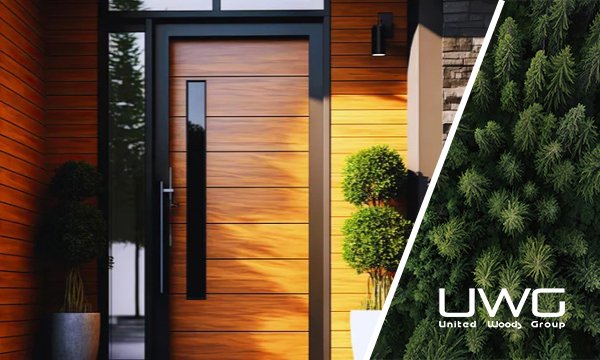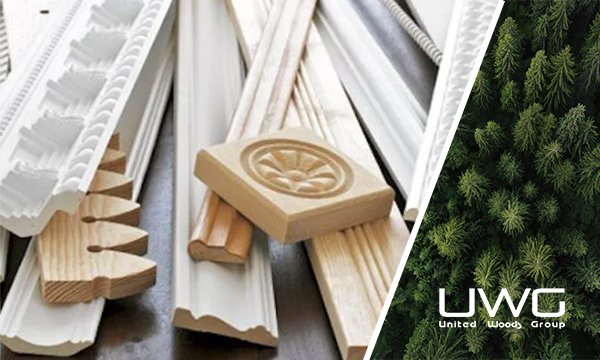Are you looking for durable, stylish, and affordable doors for your home? If so, melamine doors might be the perfect solution. Many homeowners struggle to find doors that offer both quality and aesthetic appeal without breaking the bank. Melamine doors provide an excellent balance of durability, design, and cost-effectiveness.
Melamine doors are made from a type of laminate called direct-pressure laminate or low-pressure laminate. This material, which includes melamine resin, creates a very durable and versatile sheet. Melamine is popular because it’s tough against moisture, heat, and scratches, making it perfect for many uses, especially in busy areas.
Now that you have a brief understanding of melamine doors, let’s dive deeper into their features and benefits.
What Are the Advantages of Melamine?
Melamine, a type of laminate coating used on particleboard or MDF (medium-density fiberboard), offers several advantages that make it a popular choice in various applications. Here are the key benefits:
- Durability: Melamine is highly durable and resistant to scratches, moisture, heat, and chemicals. This makes it suitable for surfaces that experience heavy use and exposure to different elements.
- Cost-Effective: Melamine is more affordable compared to natural wood and other high-end materials. It provides a cost-effective way to achieve the look of more expensive surfaces without compromising on quality.
- Variety of Designs: Melamine is available in a wide range of colors, patterns, and finishes, including realistic wood grains, solid colors, and textures. This variety allows for versatile design options to suit different styles and preferences.
- Low Maintenance: Melamine surfaces are easy to clean and maintain. Their non-porous nature prevents dirt and stains from penetrating, allowing for simple cleaning with a damp cloth and mild detergent.
- Consistency: Melamine provides a consistent and uniform finish, unlike natural wood, which can have variations in color and grain. This ensures a cohesive look across multiple panels and surfaces.
- Resistance to Wear and Tear: Melamine is resistant to everyday wear and tear, including chipping, cracking, and fading. This durability makes it ideal for high-traffic areas and frequently used surfaces.
- Eco-Friendly Options: Many melamine products are made using recycled materials and environmentally friendly manufacturing processes. This makes them a more sustainable choice compared to some other materials.
- Lightweight: Melamine-coated boards are generally lighter than solid wood, making them easier to handle, transport, and install, which can reduce labor costs and time.
- Warp Resistance: Melamine-coated particleboard or MDF is less prone to warping or bowing compared to solid wood, ensuring long-lasting stability and shape retention.
- Customizability: Melamine surfaces can be easily cut, drilled, and shaped to fit various sizes and designs. This flexibility makes them suitable for custom furniture and cabinetry projects.
- Heat Resistance: Melamine has good heat resistance properties, making it suitable for kitchen countertops and other surfaces that may be exposed to heat.
- Hygienic Surface: The non-porous surface of melamine prevents the growth of bacteria and mold, making it a hygienic choice for kitchens, bathrooms, and healthcare facilities.

Is Melamine Door Good?
Yes, melamine doors are an excellent choice for many reasons. They are resistant to scratches, abrasions, high temperatures, and moisture. Thanks to their strong construction, melamine doors do not fade over time, ensuring they continue to look their best for years.
Melamine’s resistance to scratches and abrasions makes it particularly suitable for high-traffic areas, such as kitchens and bathrooms. In these spaces, doors often come into contact with various items and substances that could potentially cause damage. Melamine’s durability ensures that the doors maintain their appearance despite frequent use and exposure to potential hazards.
The ability of melamine to handle high temperatures and resist moisture is another significant advantage. This makes melamine doors ideal for use in environments where these factors are a concern. For example, kitchen cabinets made from melamine can withstand the heat from cooking appliances and the moisture from kitchen activities without warping or degrading.
Moreover, melamine doors are available in a wide range of finishes and colors. This variety allows homeowners to choose designs that complement their interior decor, providing both functionality and aesthetic appeal. Whether you prefer a sleek, modern look or a more traditional appearance, melamine doors can meet your design needs.

Is Melamine a Plastic or Wood?
Melamine is a type of plastic found in many reusable plates, utensils, and cups. The FDA has ruled that melamine is safe to use, but it should not be used in a microwave. For doors, melamine is applied as a laminate on wood substrates, combining the benefits of both materials.
In the context of cabinetry and doors, melamine is used as a laminate that covers the surface of particleboard or Medium Density Fiberboard (MDF). This combination allows melamine doors to benefit from the strength and stability of the underlying wood substrate, while also enjoying the protective and decorative properties of the melamine surface.
The melamine used in doors and cabinets is created by pressing melamine resin-soaked paper onto the wood substrate under heat and pressure. This process forms a strong bond that results in a durable and smooth finish. The resulting product is a composite material that leverages the best qualities of both plastic and wood.

Is Melamine Better Than Wood?
Melamine offers several advantages over wood, including better resistance to heat, moisture, and scratches. This makes melamine doors a durable and weather-resistant option for various applications. However, personal preferences and specific needs might make wood a better choice for some.
One of the key benefits of melamine over wood is its uniformity. Natural wood can have variations in grain and color, which may be desirable for certain aesthetic preferences but can also result in inconsistencies. Melamine, on the other hand, provides a consistent appearance, which is particularly useful for large projects where uniformity is important.
Additionally, melamine’s resistance to environmental factors such as heat and moisture makes it more suitable for use in areas with fluctuating conditions. For instance, in humid climates or spaces like kitchens and bathrooms, melamine doors are less likely to warp or swell compared to natural wood.
However, some people prefer the look and feel of natural wood, which can offer a unique and timeless appeal. Wood can also be refinished, stained, or painted to match changing design preferences, providing greater flexibility over time. Ultimately, the choice between melamine and wood will depend on individual needs, preferences, and the specific application.
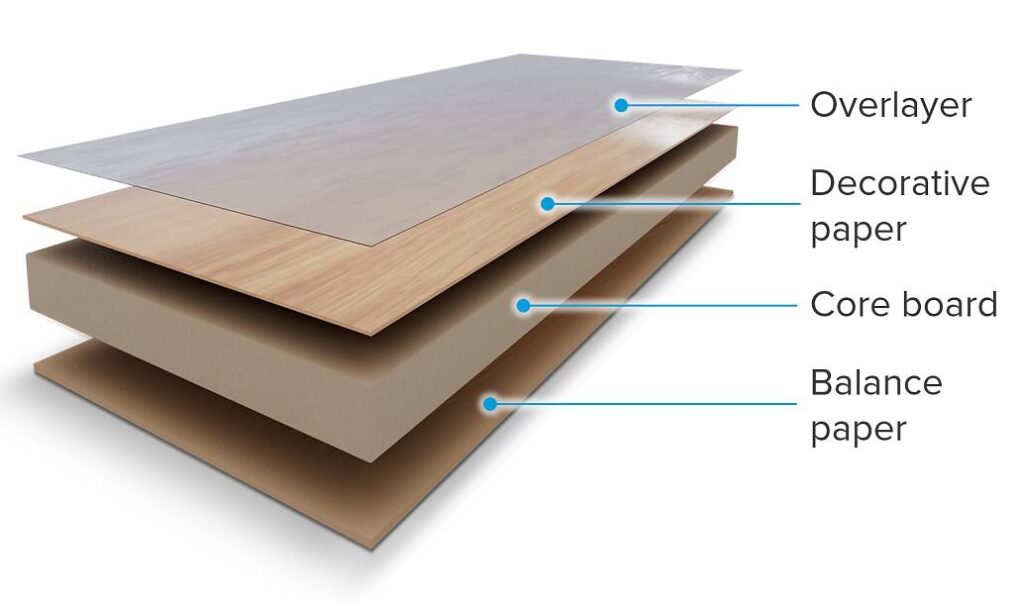
What Are Melamine Doors Used For?
Melamine doors are commonly used in kitchen cabinets, bathroom vanities, closets, and other storage solutions. Their durability and resistance to wear and tear make them ideal for high-traffic areas and daily use.
In kitchens, melamine doors are a popular choice for cabinets because they can withstand the rigors of cooking and food preparation. They are easy to clean, which is essential in a space where spills and splatters are common. The variety of finishes and colors available for melamine doors also allows homeowners to create a cohesive and attractive kitchen design.
In bathrooms, melamine doors are used for vanities and storage cabinets. The moisture resistance of melamine is particularly beneficial in this environment, where exposure to water and humidity is frequent. Melamine doors will not swell or deteriorate when exposed to moisture, ensuring they remain functional and attractive over time.
Closets and other storage solutions also benefit from the use of melamine doors. The durability and low maintenance requirements of melamine make it an excellent choice for wardrobe doors, shelving units, and other storage applications. Melamine’s ability to resist scratches and dents ensures that these storage solutions remain in good condition, even with frequent use.
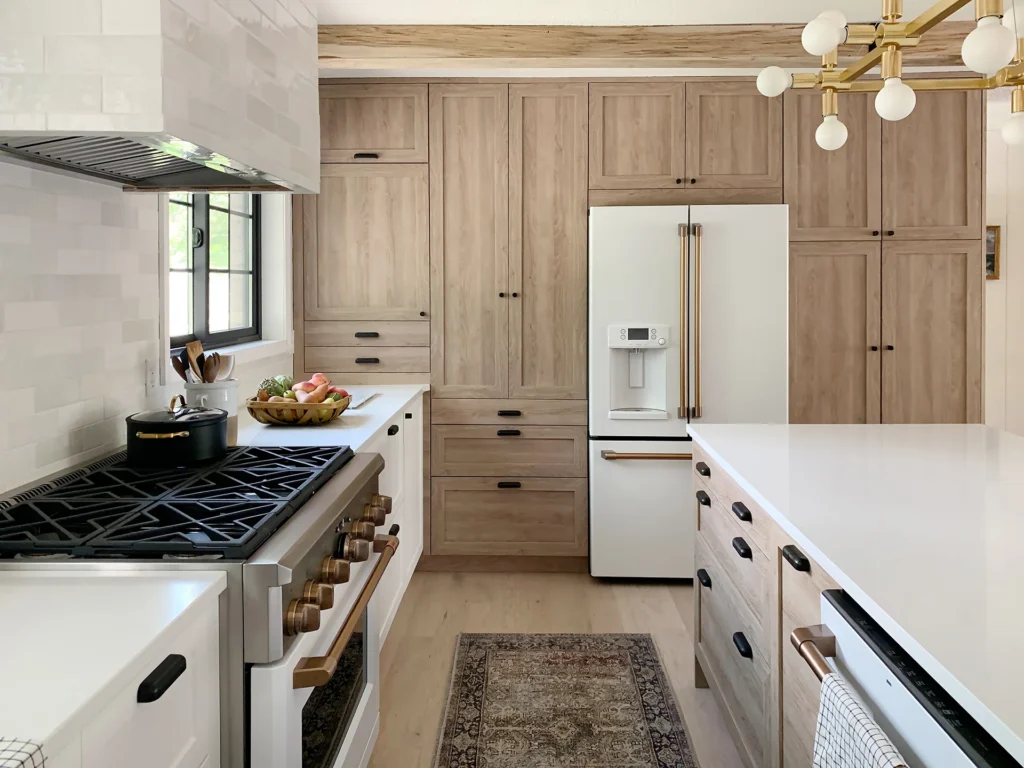
What Are Melamine Doors Made Of?
Melamine doors are made from melamine resin, which is bonded onto particle board or Medium Density Fiberboard (MDF). This combination creates a strong, durable surface that can withstand various environmental factors.
The process of making melamine doors involves several steps. First, sheets of paper are soaked in melamine resin, which is a type of thermosetting plastic. These resin-soaked sheets are then dried and cut to size. The prepared sheets are placed on top of the particle board or MDF and subjected to heat and pressure. This process causes the melamine resin to harden and bond with the wood substrate, creating a smooth and durable surface.
The resulting melamine-coated board is then cut and shaped into doors. Edges may be sealed with edge banding to ensure a neat and finished look. The melamine surface can be textured or printed with various designs, allowing for a wide range of finishes and colors.
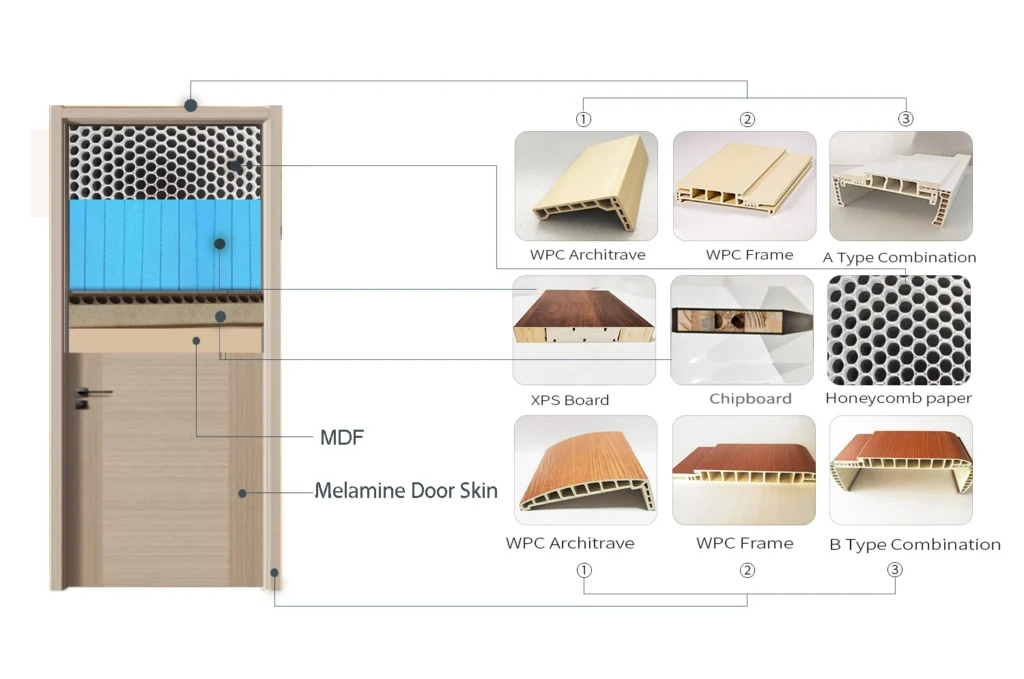
How Long Do Melamine Cabinets Last?
With proper care and maintenance, melamine cabinets can last for many years. Their resistance to scratches, heat, and moisture ensures they remain in good condition, making them a long-lasting option for your home.
The lifespan of melamine cabinets depends on several factors, including the quality of the materials used and the level of care they receive. High-quality melamine doors, made from robust substrates and properly installed, can provide many years of reliable service.
Regular cleaning and avoiding excessive force or impact can help extend the life of melamine cabinets. While melamine is durable, taking care to avoid dropping heavy objects or using sharp tools on the surface can prevent damage. Additionally, using gentle cleaning products and soft cloths will help maintain the appearance of the melamine finish.
In commercial settings, melamine cabinets are often chosen for their durability and low maintenance requirements. In offices, retail spaces, and other high-traffic areas, melamine cabinets can withstand the demands of daily use while retaining their attractive appearance.

Are Melamine Cabinets Good Quality?
Yes, melamine cabinets are known for their high quality. They offer a combination of durability, affordability, and design versatility. This makes them a popular choice for many homeowners looking to enhance their living spaces.
The quality of melamine cabinets can be attributed to the materials and manufacturing processes used. High-quality melamine resin and wood substrates result in a product that is both strong and visually appealing. The precision of modern manufacturing techniques ensures that melamine doors fit perfectly and operate smoothly.
In terms of performance, melamine cabinets excel in areas where durability and resistance to environmental factors are important. Their ability to resist heat, moisture, and scratches makes them suitable for a variety of applications, from kitchens to bathrooms to commercial spaces.
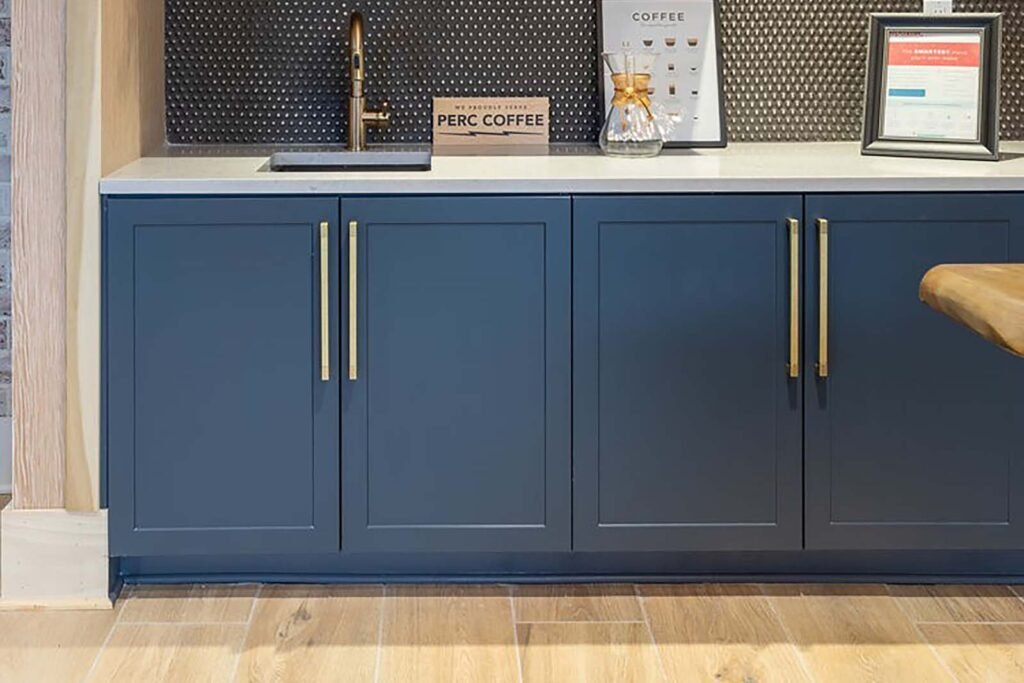
Summary
Melamine doors are a fantastic option for anyone looking to combine durability, style, and affordability in their home. With their resistance to scratches, heat, and moisture, these doors are perfect for high-traffic areas. Explore melamine doors for your next home improvement project and enjoy the benefits they offer!



